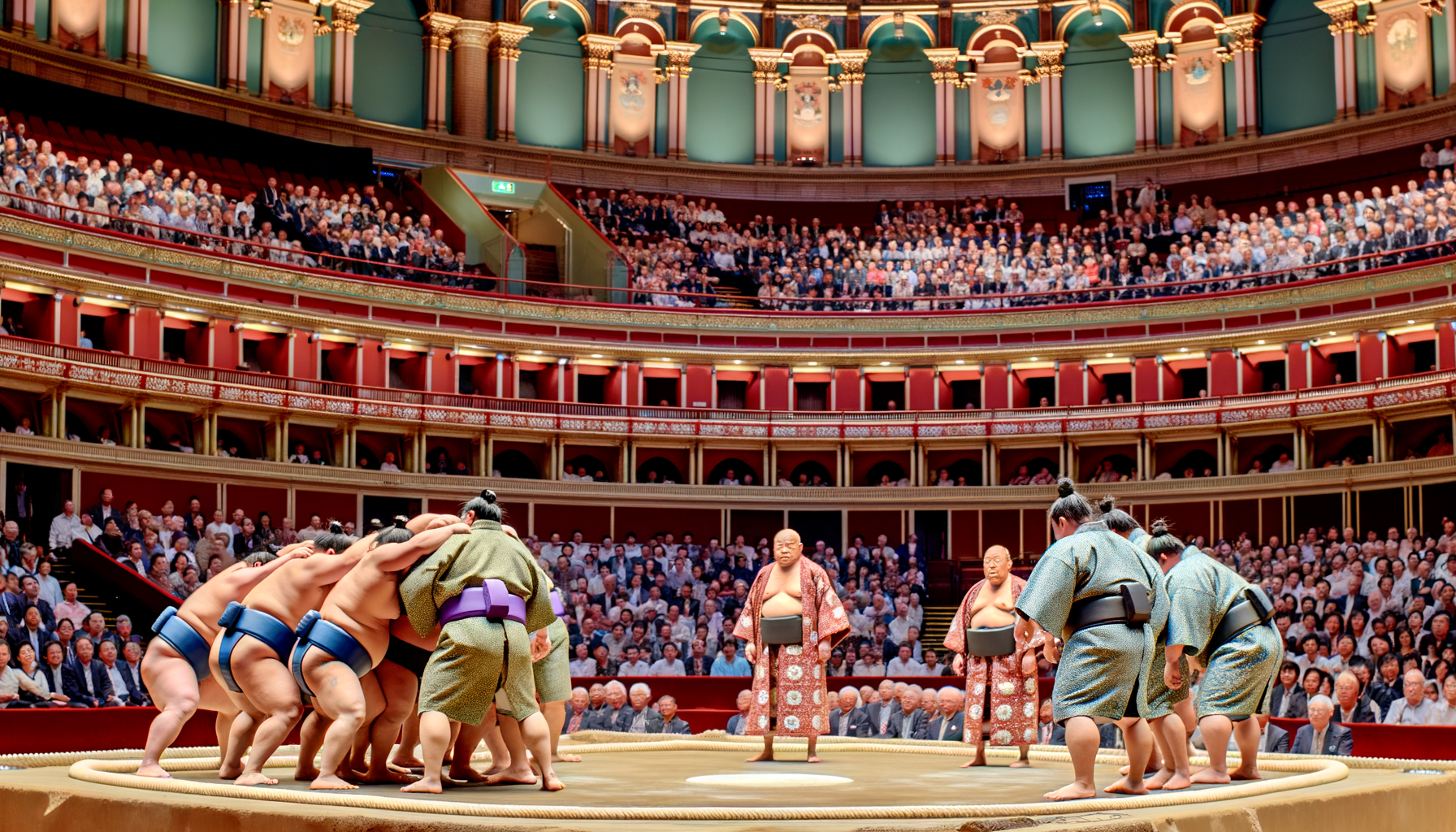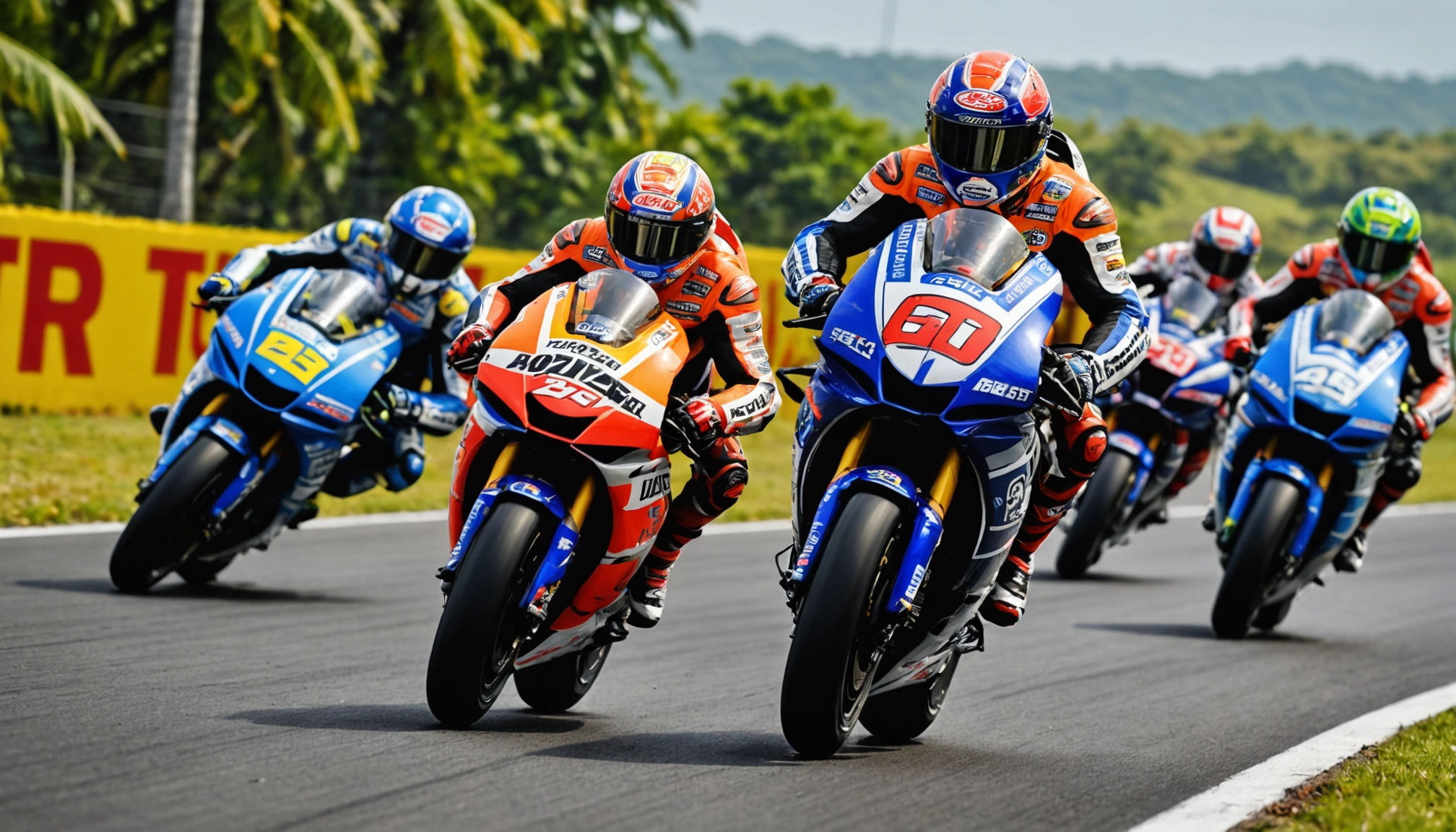Grand Sumo Tournament Returns To London In 2025
Discover why the Grand Sumo Tournament is held in London, the sport's rich traditions, and how this rare event boosts sumo's global appeal and Japanese culture.

By Editorial
Introduction To The Grand Sumo Tournament In London
In October 2025, sumo wrestling, Japan's iconic national sport, takes centre stage at the historic Royal Albert Hall in London. This marks only the second time ever that a Grand Sumo Tournament has been held outside Japan, the first being in London in 1991. The event, running from 15 to 19 October, offers British and international fans a rare chance to witness the unique blend of ancient tradition, discipline, and athleticism that defines sumo.
The tournament’s return to London highlights a growing international interest in sumo and Japanese culture. Fans can watch live coverage on BBC iPlayer and BBC Sport, bringing the excitement directly to their screens.
The Cultural Significance And Rituals Of Sumo Wrestling
Sumo is far more than just a combat sport. Rooted in over 1,000 years of Shinto religious rituals, each match is steeped in symbolism. Before bouts, Shinto priests perform a ceremony where a hole is dug in the ring’s centre (the dohyo) and filled with offerings such as nuts, squid, seaweed, and sake. This act is believed to enshrine a spirit, purifying the ring.
Rikishi (sumo wrestlers) follow with ritualised stomps and claps to ward off evil spirits. These ceremonies underscore the sport’s deep connection to Japanese spirituality and tradition, aspects that many fans find fascinating beyond the physical contest.
Why Is The Grand Sumo Tournament Held In London?
The London hosting is more than a sporting event; it’s a cultural exchange. Japan’s Sumo Association chairman, Hakkaku Rijicho, emphasised the desire to "convey to the people of London the appeal of Sumo – an ancient traditional Japanese culture." As sumo’s global popularity rises, particularly in Europe, staging the tournament in London helps introduce new audiences to the sport’s rich heritage.
Following London, sumo is also scheduled to visit Paris in 2026, signalling a clear strategy to expand its international footprint. For British sports fans, this is a unique opportunity to engage directly with a sport rarely seen live outside Japan.
Understanding How A Sumo Bout Works
Sumo bouts are deceptively simple yet thrilling in their unpredictability. Two rikishi face off in a circular ring measuring 4.55 metres in diameter. The match ends when one wrestler forces the other outside the ring or causes any part of their body other than the soles of their feet to touch the ground.
Bouts can last mere seconds or stretch over two minutes, depending on the wrestlers’ strategies. There are two primary fighting styles: pusher-thrusters who use brute force to shove opponents out, and belt-fighters who grapple and execute judo-like throws.
Top rikishi often combine styles, adapting fluidly during bouts. With 82 recognised winning techniques—from bold throws to clever sidesteps—the sport’s variety keeps spectators captivated. The lack of weight classes means size differences are common, adding another layer of intrigue.
Life And Discipline Of A Sumo Wrestler
Life as a rikishi is a disciplined, communal existence. Wrestlers live in stables called heya, where training starts early each morning. Their daily routine includes intense practice sessions, followed by consuming chankonabe—a high-protein stew designed to help them gain the bulk necessary for wrestling.
On average, wrestlers eat six to ten bowls per meal, totalling around 10,000 calories a day. One retired rikishi famously consumed 65 bowls in a single sitting. Despite their impressive size, rikishi maintain remarkable agility and flexibility, balancing mass with explosive power.
Their lifestyle is strictly regulated by the Sumo Association. Rank determines privileges such as private rooms and living arrangements. Lower-ranked wrestlers cook and perform chores, while higher-ranked rikishi enjoy greater status and rewards.
Rankings are updated after each of the six annual 15-day tournaments based on performance. Those with winning records climb the ranks, while losing records result in demotion. The ultimate rank is Yokozuna, reserved for grand champions who embody sumo’s spirit both on and off the dohyo.
The Global Reach And Diversity Of Sumo Wrestling
While the majority of professional rikishi are Japanese, sumo has welcomed international talent for decades, particularly from Mongolia. One of the current Yokozuna, Hoshoryu, hails from Mongolia, and there are competitors from Ukraine and other parts of Eastern Europe and the Pacific Islands.
An inspiring case is 15-year-old Nicholas Tarasenko from Hull, who recently travelled to Japan to train as a professional rikishi. His journey highlights sumo’s growing appeal outside Japan and its potential as a global sport.
Conclusion: What The London Tournament Means For Sports Fans
The 2025 Grand Sumo Tournament in London is a rare spectacle combining athleticism, culture, and history. Whether you are a long-time fan or new to sumo, this event offers a fascinating insight into a sport unlike any other.
For those interested in other major sporting events, exploring coverage like the Ryder Cup 2024 latest updates and key insights or Rory McIlroy’s triumph at the 2025 Irish Open can provide a broader view of international sport in 2025.
Sumo’s presence in London not only enriches the city’s diverse sporting calendar but also strengthens cultural ties, inviting fans to appreciate the spirit and spectacle of this ancient Japanese tradition.
Related topics
Editorial
Sports expert at SportsScoop
Specialist in sports analysis and journalism
Related articles
Want to read more?
Explore our comprehensive collection of sports articles and analysis, or contact us for more information.



